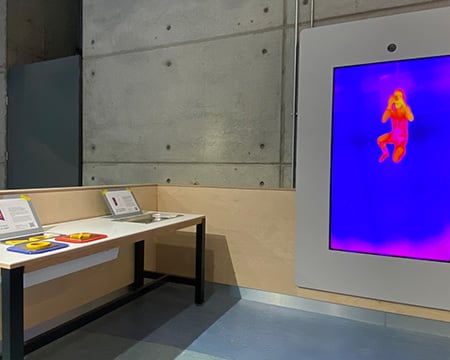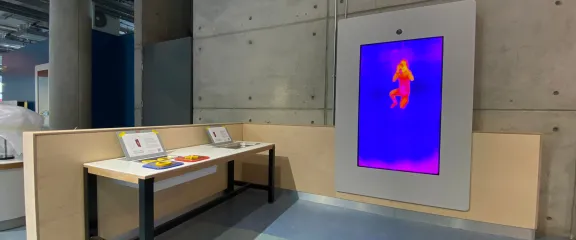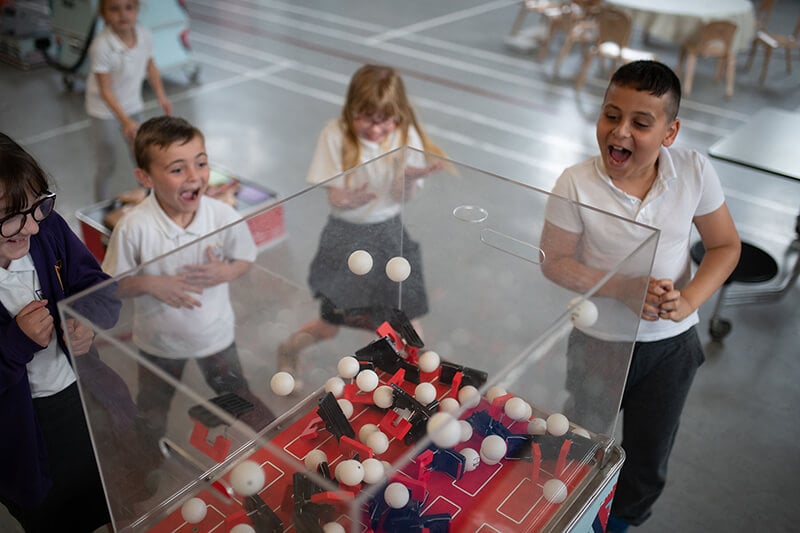Hot or Cold?
The camera captures infrared energy and displays it as an image. It detects differences in the heat of an object and shows them as different colours in the image.


All objects give off thermal energy, even if they are cold. The hotter an object is, the more thermal energy it gives off.
Exploration Questions
Ask pupils the following questions as they explore the exhibit:
- What do you think the screen is showing?
Example answer: Hot and cold parts of the body, thermal image, infrared image.
- How do you know which parts of the body are hot and which are cold?
Example answer: Hot parts of the body are red/orange, and cold parts of the body are green/blue.
- Looking at the image on the screen, which parts of your body do you think are cold?
Example answers: Hands, fingers, feet.
- Looking at the image on the screen, which parts of your body do you think are hot?
Example answers: Face, neck, head.
Activity
Ask pupils to move their bodies for 30 seconds, then ask pupils the following questions:
- What changes do you notice in the colour of your body in the thermal image?
Example answer: More body parts are red/orange.
- Why do you think there was a change in the colour of your body on the thermal image after movement?
Example answer: More body parts were warmer as moving around generates heat in the body.
- How do you think the camera can be used?
Example answer: Smoke-filled environments where visibility is low (e.g. by firefighters), identifying where more insulation is needed in homes (e.g. by a building surveyor).


